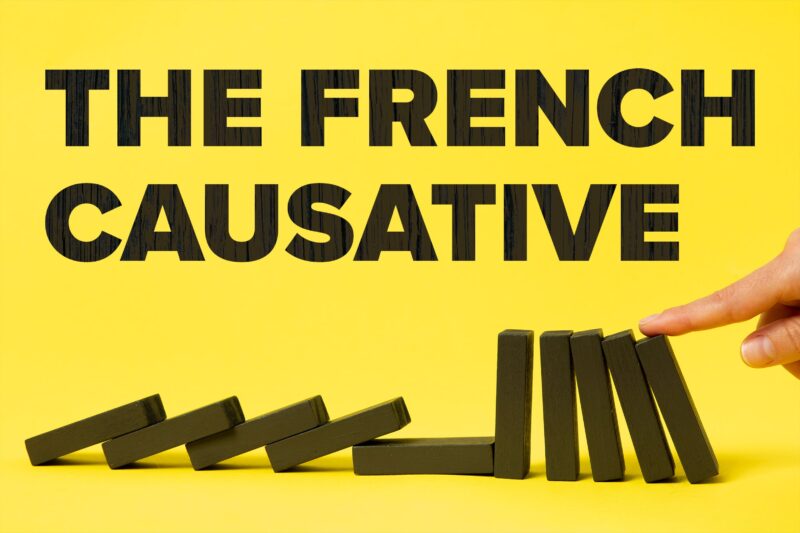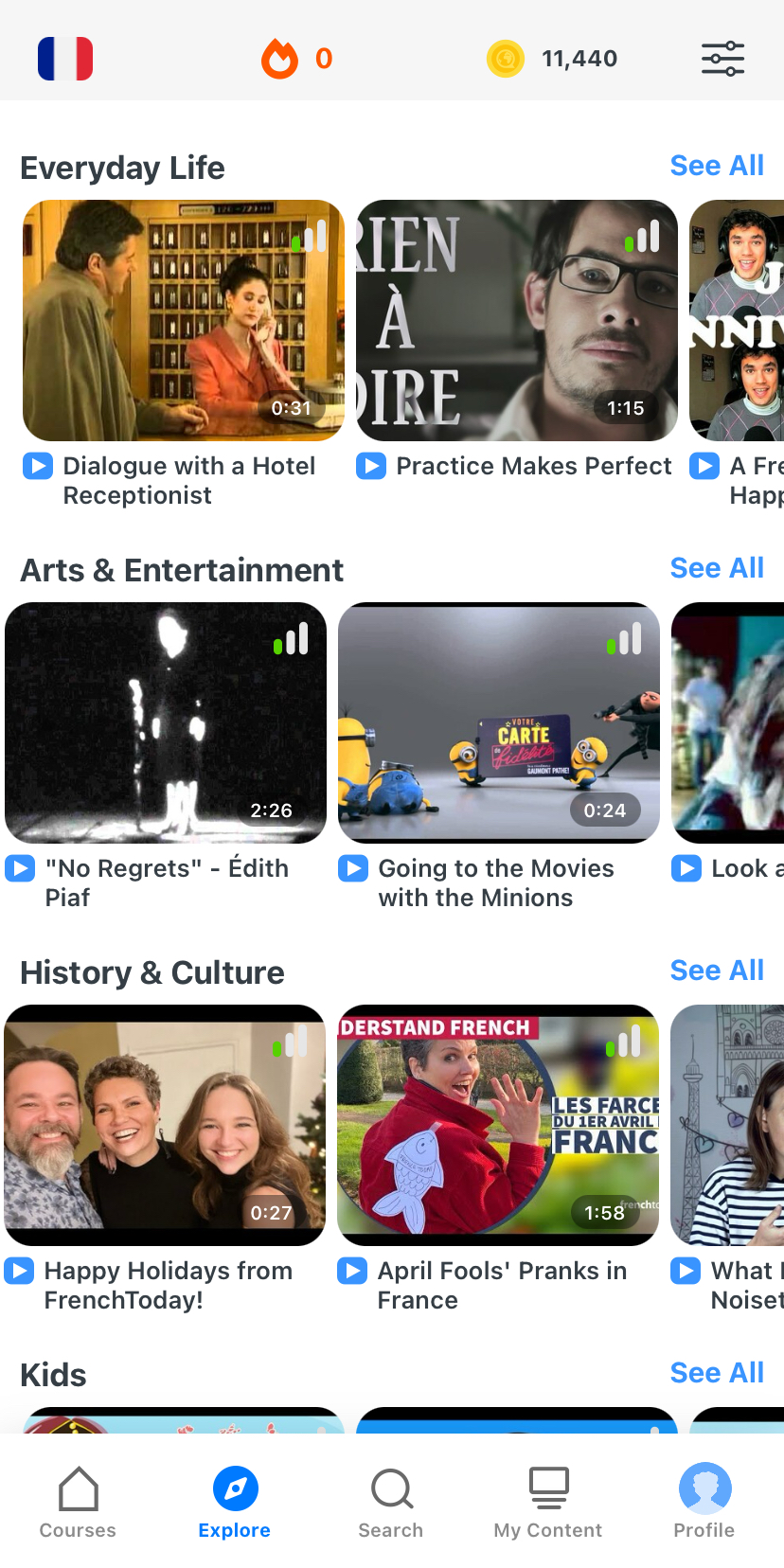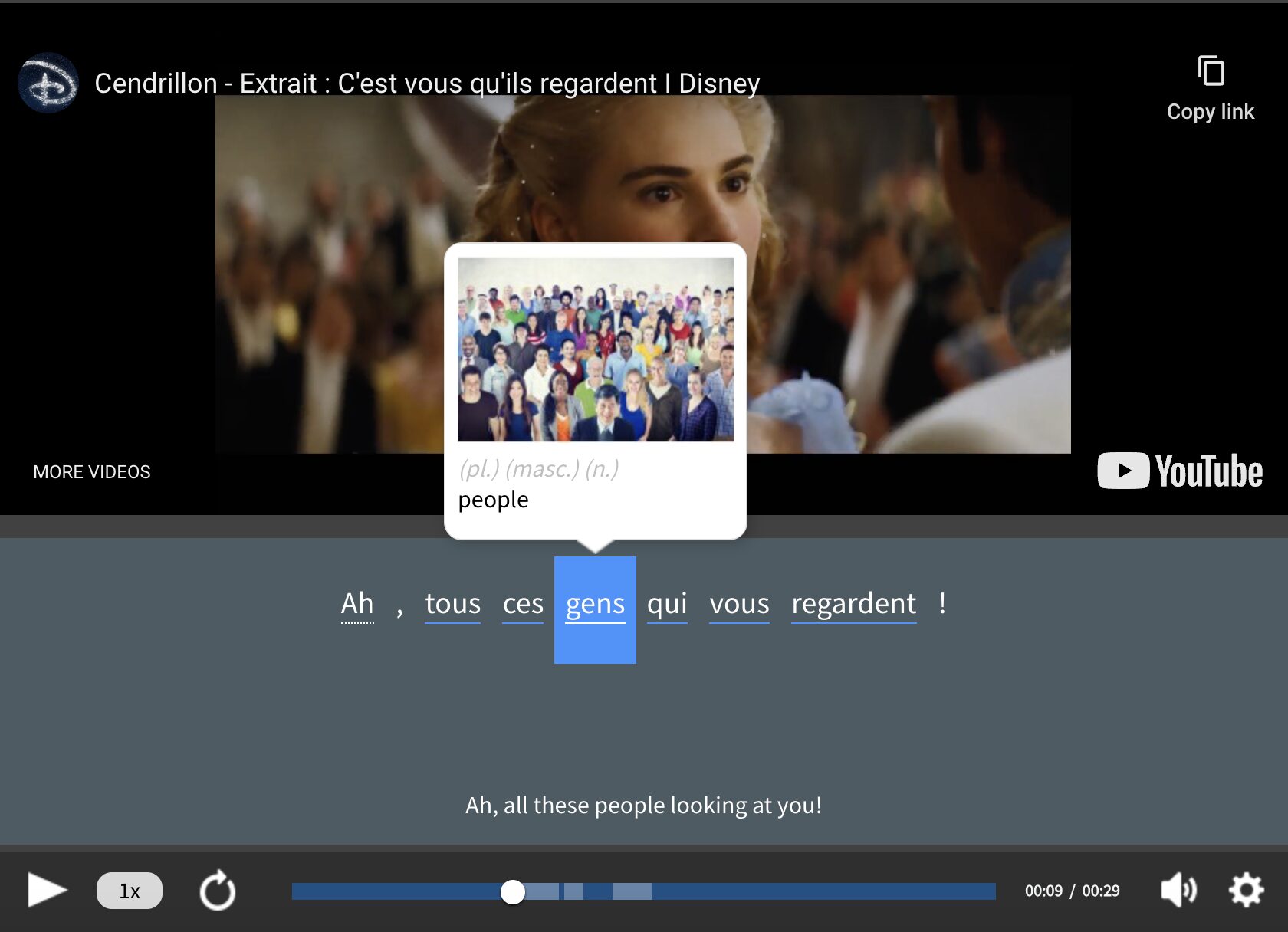How to Use the Causative in French

The French causative expresses cause. Usually, the subject of a sentence performs or does an action (figuratively or literally). But with the causative, the subject is causing the verb to happen, not acting it out themselves.
For example: Le professeur fait parler les élèves en français. (The teacher makes the students speak French.) You’ll see the verb faire (to do or to make) in causative sentences.
Download: This blog post is available as a convenient and portable PDF that you can take anywhere. Click here to get a copy. (Download)
How to Form the Causative
The causative has four (and sometimes five) components:
1. The subject, whether that’s a pronoun, noun or proper noun
2. Faire conjugated to whatever tense you need for the situation
3. The infinitive of the verb that’s being caused
4. The agent (the person or thing being made to act) and/or the receiver (the person or thing being acted upon)
Those last two may look a little easy to trip up on, so let’s break these components down into some examples.
Since I put in that little “and/or,” you probably guessed that there’s more than one way to form the causative. I promise this is still simple, but we’ll do separate examples for agent-only, receiver-only and agent and receiver together.
Agent-only Causative
This one is used when you’re using the causative to describe someone who is made to do something by the subject.
Je fais danser mon ami. (I’m making my friend dance.)
So we’ve got our 1, 2 and 3: the subject, conjugated faire and the infinitive.
Then, since mon ami is the thing that’s being made to act (dancing in this situation…my poor friend), that makes them an agent.
Notice that the agent is located after both verbs, whereas in English we would say “I’m making my friend dance,” with “friend” coming after the verb “to make” and before the verb “to dance.”
So even though the wording may seem funky, remember to keep your faire and infinitive close and comfy.
Here are three more examples of the agent-only French causative:
Je fais étudier mes enfants. (I make my children study.)
Le professeur fait parler les élèves. (The teacher makes the students speak.)
Tu fais chanter ton chien. (You make your dog sing.)
Receiver-only Causative
We use this form of the causative when the subject is making something happen to something or someone, rather than making someone or something do something. For example:
Il fait détruire les preuves. (He’s having the evidence destroyed.)
Again, same thing as with agent-only causative: subject, faire and infinitive. But this time, the subject is having “the proof” (the receiver) destroyed.
You may have had that instinct to translate the phrase to “He’s destroying the evidence,” which would be Il détruit les preuves. But “he” isn’t the one doing the destroying, he’s only causing it to happen (hence why we’re using the causative).
Just think: With the causative, the subject is never really getting their hands dirty. The causative is for when you’re feeling passive, lazy or just plain bossy.
Let’s look at three more examples:
Je fais réparer ma voiture. (I am having my car repaired.)
Elle fait couper les cheveux à son fils. (She is having her son’s hair cut.)
Nous faisons nettoyer la maison. (We are having the house cleaned.)
Agent and Receiver Causative
If the subject is having the agent do something to a receiver, then you need both.
Je fais comprendre le causatif aux lecteurs. (I’m making the readers understand the causative.)
Here, since we have an agent and a receiver, there are a few things that you need to know (these rules apply only if you aren’t using indirect object pronouns, but more on that later):
1. The agent and receiver still go after the subject, faire and the infinitive.
2. The agent always goes after the receiver.
3. You need a preposition—either à or par—to include the agent in this construction.
#3 is only when there’s both an agent and a receiver. It can help distinguish between the two when they’re people, as in Maman fait jouer Sam à la balle (Mom is making Sally play with the ball). But make sure you don’t use a preposition when you’re doing agent-only.
If you’re having trouble remembering the difference between the agent and the receiver, think of it this way: If you worked for a secret government organization, you would make an agent go do your bidding. And if you’re making this agent send a package to the enemy, then isn’t the enemy receiving the package, making him the receiver?
Here are a few more examples to help you get it down:
Je fais réparer ma voiture par le garagiste. (I am having my car repaired by the mechanic.)
Elle fait laver son chien par le toiletteur. (She is having her dog washed by the groomer.)
Nous faisons corriger nos devoirs par le professeur. (We are having our homework corrected by the teacher.)
The Reflexive French Causative
If the causative describes something someone else has to do, we use the reflexive causative to describe what you’re having done to yourself—or what others are having done to themselves.
Getting yourself into trouble, essentially.
Here are some examples of ways to use it:
Je me fais faire une manicure. (I’m getting myself a manicure.)
Don’t be turned off by the double faire here. It looks weird, but it’s correct.
Il se fait cuisiner son dîner chaque soir. (He has his dinner cooked for him each night.)
S’est-elle fait acheter le chien ? (Did she have the dog bought for her?)
How to Use the French Causative with Object Pronouns
There are a few sticky situations you can get yourself into with the causative and object pronouns. Luckily, there are only a few major points you need to remember to make these sentences correct.
Direct Objects with the French Causative
Since you either have an agent or a receiver with the causative, you always have a direct object.
We’ve constructed the causative when all nouns are present, but what if you want to replace one of them with a direct object pronoun to simplify your speech?
There’s really only one big thing you need to remember to do this correctly: The direct object pronoun goes before faire.
You’re probably already familiar with some of the rules surrounding compound tenses, so just think of the causative similarly. In both cases, you need the direct object pronoun placed in front of the conjugated verb: faire in this case.
If you need a refresher, your direct object pronouns are le, la and les.
Let’s look at an example.
Je fais lire mes élèves. (I’m making my students read.) → Je les fais lire. (I’m making them read.)
Direct and Indirect Objects with the French Causative
If you’re replacing the receiver in a receiver-only causative construction, it would be replaced by a direct object.
But in an agent and receiver situation, it would be replaced by an indirect object.
If you’ve studied these before, this shouldn’t come as a surprise, since indirect object pronouns are used when prepositions are present. In the following example, since there is a par in front of mon fils, then you’d need to replace lui or leur.
Je fais sortir la poubelle par mon fils. (I’m making my son take out the trash.) → Je lui fais sortir la poubelle. (I’m making him take out the trash.)
And if you wanted to replace both nouns to make things super vague, then you’d just combine the last two examples:
Je la lui fais sortir. (I’m making him take it out.)
For this specific purpose, you only need to know that direct object pronouns go before indirect object pronouns, and you’re all set to do your replacing.
Don’t Agree Your Direct Object Pronouns
The causative is sort of like a compound tense. And in compound tenses, you need to make gender agreements with your direct object pronoun. But you actually don’t need to with the causative!
So this part is simple: Don’t agree your direct object pronouns.
When to Use the French Causative
There are five common ways to use the causative, ranging from some of the examples we’ve already seen to new territory that should expand on your current French grammar knowledge.
1. When You Want to Express “Making”
We’ve been using this word a lot and with good reason.
If you want to translate any English phrase that looks something like “I’m making someone do something,” or “someone is making someone else do something”—or if we’d actually replace all of those something-or-others with real nouns—then you need the causative.
Here’s an example:
Je fais partir l’homme. (I’m making the man leave.)
This is best used when someone is being forced to do something.
2. When You Want to Express “Having/Getting Done”
You may have avoided getting your nails done in France (manicures aren’t all that popular anyway) because you had no idea how to say you were getting your nails done.
Here are a few things people usually “have done” that require the causative:
Je me fais faire les ongles. (I am having my nails done)
Il fait peindre la maison. (He’s having the house painted.)
Elle fait réparer la voiture. (She’s having the car fixed.)
Je me fais couper les cheveux. (I’m getting my hair cut.)
3. When You Want to Express “Feeding”
This may seem really simple at first glance, but think about it. Do you really know an eloquent way to say “I fed the dog” in French? Probably not.
The verb nourrir means to feed, but a better way to say it would be with faire + manger in the causative formation.
This translates to “making to eat,” but is used commonly as “to feed.” However, don’t confuse faire manger with faire à manger (to get a meal ready).
Here are some examples:
J’ai fait manger la mousse de canard aux invités. (I fed duck mousse to my guests.)
Il fait manger les légumes à sa fille. (He’s feeding vegetables to his daughter.)
4. When You Want to Express “Show”
Montrer means “to show” in French. But there’s sometimes more than one way to say things. And if you want a more everyday French way to tell someone to “show” you something, faire + voir works.
This isn’t the normal causative—it’s a special construction. It’s the only time you don’t use an agent or a receiver.
Use it in the imperative, like so:
Tu as un nouveau chien ? Fais voir ! (You have a new dog? Show me!)
Fais voir ton reçu. (Show me your receipt.)
5. When You Want to Describe Passive Events
When using the reflexive causative, you can describe passive events or things that unintentionally happen.
This is particularly useful when describing morbid events:
Il s’est fait tuer par un ours. (He was killed by a bear.)
Je me suis fait voler mon portefeuille. (I got my wallet stolen.)
Elle s’est fait mordre par le chien. (She got bitten by the dog.)
Grammar constructions like the causative may seem weird and challenging at first, but you’ll be surprised to find that certain phrases come to you easier now and that your comprehension has increased.
Aside from knowing about the rules, you can absorb them more naturally by going through more example sentences. You’ll need to get familiar with deconstructing sentences word for word so that you know the grammatical workings behind them. You can do this by talking to native speakers, reading books and consuming lots of French content with a resource like FluentU.
FluentU takes authentic videos—like music videos, movie trailers, news and inspiring talks—and turns them into personalized language learning lessons.
You can try FluentU for free for 2 weeks. Check out the website or download the iOS app or Android app.
P.S. Click here to take advantage of our current sale! (Expires at the end of this month.)
The bottom line is that when you come across a French construction that seems a little nitpicky, you should make yourself learn it!
Download: This blog post is available as a convenient and portable PDF that you can take anywhere. Click here to get a copy. (Download)
And One More Thing...
If you like learning French at your own pace and from the comfort of your device, I have to tell you about FluentU.
FluentU makes it easier (and way more fun) to learn French by making real content like movies and series accessible to learners. You can check out FluentU's curated video library, or bring our learning tools directly to Netflix or YouTube with the FluentU Chrome extension.
One of the features I find most helpful is the interactive captions—you can tap on any word to see its meaning, an image, pronunciation, and other examples from different contexts. It’s a great way to pick up French vocab without having to pause and look things up separately.
FluentU also helps reinforce what you’ve learned with personalized quizzes. You can swipe through extra examples and complete engaging exercises that adapt to your progress. You'll get extra practice with the words you find more challenging and even be reminded you when it’s time to review!
You can use FluentU on your computer, tablet, or phone with our app for Apple or Android devices. Click here to take advantage of our current sale! (Expires at the end of this month.)











